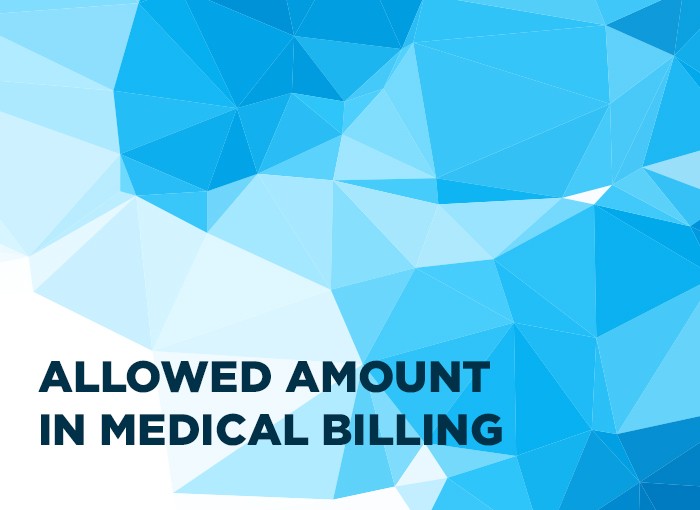What is an allowed amount in medical billing?
Medical billing that seems a straightforward process inculcates various intricate procedures, policies, and terms. One such term is the allowed amount that a medical professional encounters very often in EOBs.
Standard Definition Of The Allowed Amount
The maximum dollar amount allowed for covered services rendered by participating providers and facilities or by nonparticipating providers and facilities. Deductibles and coinsurance amounts are calculated from eligible charges. Participating providers and facilities accept this allowed amount as payment in full for covered services. Nonparticipating providers and facilities may not accept this amount as payment in full for covered services.
In an ideal situation, the medical billing process should happen in this order: A medical professional provides services to a patient, generates a medical bill, and submits the insurance claim with appropriate documents. In return for the claim, the insurance companies are supposed to reimburse the amount paid for the service rendered by the patients. However, these ideal situations occur rarely. The insurance companies reimburse the amount based on the allowed amount. The allowed amount is the appropriate cost, decided by the insurance company, for the service provided by the medical professional. This allowed amount can be much lesser than the actual amount claimed by the medical service provider.
The insurance companies use the Current Procedural Terminology (CPT) coding system to distinguish the services provided. There is a standard amount (allowed amount) set by the insurance company against each code. This allowed amount is the maximum amount that the insurance companies are liable to reimburse. There are various factors on which the allowed amount varies:
- Insurance Company
- Type of Policy
- Location of Medical Professional
- Type of License, etc.
In most cases, the insurance policy does not disclose the allowed amount in advance. The patients are generally unaware of the same. In such situations, the patients are caught by surprise and hesitate to pay the remaining amount of the services. This further restricts the cash flow of the organization. Therefore, it is the responsibility of the healthcare provider to demand the allowed amount and make patients aware of the same prior to the treatment.
Furthermore, these allowed amounts are managed differently for in-network and out-of-network medical professionals.
Allowed Amount: In Case Of In-Network Doctors
If an in-network healthcare provider decides to charge more than the allowed amount, their patients are not liable to pay any extra amount. This service is provided under consumer protection by the insurance companies. The patient’s in this situation are only liable to pay for co-payments, deductibles, and co-insurance.
If an in-network medical professional charge more than the allowed amount and submits the claim against that amount, they will still be reimbursed the allowed amount. Additionally, they’ll receive an EOB with an explanation of reimbursement with a column of “amount not allowed.”
Allowed Amount: In Case Of Out-Of-Network Doctors
If the out-network healthcare provider decides to charge more than the allowed amount, their patients are liable to pay the extra amount. It is the responsibility of the out-of-network healthcare provider to make patients aware of the extra costs well in advance. The patient’s in this situation are also liable to pay for co-payments, deductibles, and co-insurance. Moreover, in such cases, the insurance companies apply the allowed amount to the patient’s deductibles.
However, if the out-of-network medical professional charges more than the allowed amount and submits the claim against that amount, they will also be reimbursed only the allowed amount. Similar to the in-network scenario, they’ll also receive an EOB with an explanation of reimbursement, along with a column of “amount not allowed.” The insurance companies are not liable to pay any extra amount for the provided services in any such situation.
Take Away
- The allowed amount is the maximum amount that insurance companies are liable to pay to medical service providers for service.
- The factor of the allowed amount is only applied to the services that have been defined in the insurance policies or/and government healthcare programs.
- An in-network professional is liable to charge only the allowed amount from the payer. The patients are not liable to pay any extra amount if charged.
- An in-network professional is liable to charge an extra amount from their patient’s. The payer is liable to reimburse only the allowed amount.




